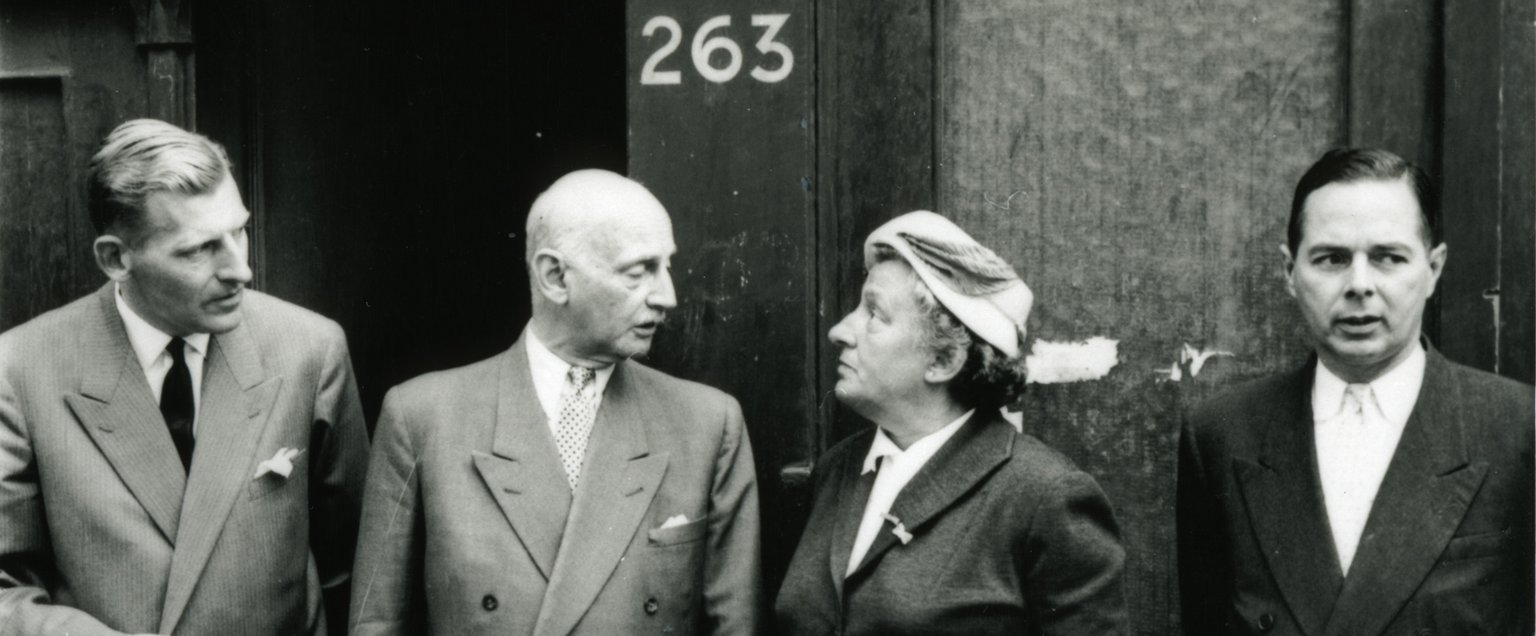April 30, 2020
—
On Sunday next, 3 May 2020, it is sixty years to the day since the Anne Frank House opened its doors to the public, on 3 May 1960. Otto Frank, the only one of the eight people who had been living in hiding in the Secret Annex to survive the Holocaust, laid the foundation for the preservation and opening of the building at Prinsengracht 263: as a warning from the past, with an eye to the future.
He was supported in his efforts by Amsterdam Mayor Van Hall, who called on the Dutch population to support the Anne Frank House financially. Today, sixty years later, the Anne Frank House could once again use the public’s support.
Otto Frank
‘I shall not remain insignificant, I shall work in the world and for mankind!’, Anne Frank wrote in her diary on 11 April 1944. Otto Frank was the driving force behind the publication of the diary written by his daughter and behind the opening of the Anne Frank House, his previous business premises and hiding place. In doing so, he was assisted by a committee of prominent Amsterdammers. The Anne Frank House organisation was established in 1957 and its main purpose was to preserve the hiding place and open it to the public. And to promote the ideals of Anne Frank in the process.
Symbol
The purchase and restoration of the property required an amount of 350,000 guilders. On 12 June 1958, on Anne’s 29th birthday, Amsterdam Mayor Van Hall put an advertisement in de Volkskrant in which he called on the Dutch population to contribute to the project. Because, he said, ‘The Anne Frank House must be preserved as a symbol of courage, hope, and trust in people in the midst of the deadly threats of our times.’
Opening
On Sunday, 3 May 1960, the moment had come, and the Anne Frank House opened its doors to the public. During the opening, Otto Frank spoke emotional words of thanks:
‘I beg your forgiveness for not speaking from this House after today. You will understand that the memories of everything that happened here are too painful. I can only thank you all for the interest you have shown by coming here today, and I hope that you will continue to support the work of the Anne Frank House and the International Youth Centre, morally and in every other respect.’
Visitors
After the opening, the number of visitors to the Anne Frank House grew almost continuously. From several tens of thousands in the first years to 1.3 million visitors in 2019. People from all over the world come to the Anne Frank House and, through the bookcase, enter the empty rooms of the Secret Annex, where the Frank family, the Van Pels family, and Fritz Pfeffer hid from the Nazis for over two years. Anne Frank described this period in an evocative way in her diary, which was left behind in the hiding place after the arrest on 4 August 1944.
Support
This spring, 60 years later, the Anne Frank House has been forced to close its doors. Ronald Leopold, executive director of the Anne Frank House, explains: ‘The world is going through an unprecedented crisis, which has an enormous impact on people everywhere and on the Anne Frank House as well. As part of the global effort to stop the dissemination of the Coronavirus, we have had to close the museum on 13 March. It is not yet clear when and how the Anne Frank House will reopen. As an independent museum that is not subsidised by the state or the city, we rely to a large extent on the revenues from museum visits for our income. If we are to continue to spread the memory of Anne Frank and her father’s mission, we can use all the support we can get. Many people have told us that they feel that the Anne Frank House and our educational work are important, and that they want to support our mission. This means a great deal to us! If you decide to make a donation to the Anne Frank House, we will be very grateful.'
